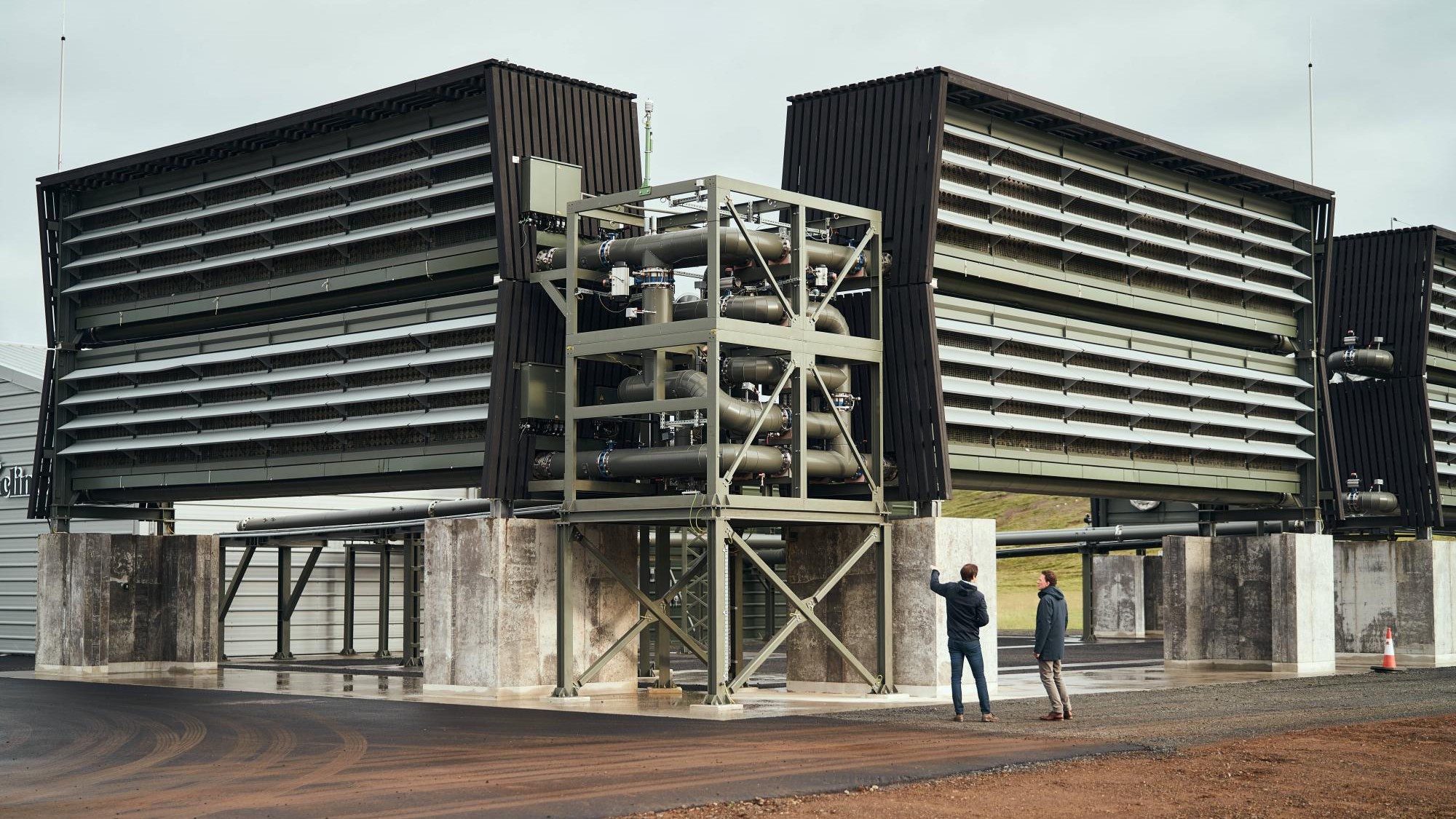This is what it looks like to remove carbon dioxide from the atmosphere on a large scale in Iceland in order to save the global climate. From the front, what looks like a jumble of giant super roasters are actually highly efficient CO2 air filtration systems. Technical name: Direct Air Capture Systems, or DACs for short.
This method can be an important tool for limiting global warming to less than two degrees Celsius. Dr. Oliver Gidden, a political researcher at the Stiftung Wissenschaft und Politik in Berlin, deals extensively with climate policy issues related to CO2 removal methods. The lead author of the latest Global Climate Report explains: “In April, the Intergovernmental Panel on Climate Change made it clear once again that CO2 removal is essential to achieving the climate goals we have all set for ourselves. And Direct Air Capture is a technology that will certainly play an important role in the future.” .
It can be compared to a large-sized vacuum cleaner
In simplified terms, the DAC principle can be compared to bulky vacuum cleaners. The difference: large amounts of air flow through a chamber with a CO2 filter. When the filter is saturated with carbon dioxide, the chamber closes and heats up. Through a chemical process, the concentrated carbon dioxide separates and separates. It can then be compressed into soil carbonate, for example, used in greenhouses or used in soft drinks.
Climeworks is one of the few companies in the world that is developing this technology. The future vision of the company described by d. “Above all else, the future has to come with upscaling technology,” says Carlos Haertel, chief technology officer at Climeworks. “I think there is a realistic chance that it will be in the plus or minus one billion tons range by 2050. I think we need to be there in the hundreds of millions Ten years ago. And around 2030, at least a few million tons of energy should have been built around the world. It’s possible.”
The technology is not yet mature
For comparison: the world’s population emits about 36 billion tons of carbon dioxide into the atmosphere every year. Company goals may already be feasible. But the development of technology is not yet fully completed and can be compared with prototypes of cars. This is why developers are still far from their 2050 goals.
Orca, the company’s first commercial facility, is located in Hellisheidi, Iceland. Thermal energy is supplied directly from the ground. Orca is the largest DAC complex in the world, removing 4,000 tons of carbon dioxide from the air each year. In a couple of years, the mammoth will enter a new era of DAC. Compared to orca, mammoths are able to absorb about nine times more tons of carbon dioxide from the atmosphere annually. But Orca really does represent a breakthrough, as it proves that it is technically possible to extract large amounts of carbon dioxide from the atmosphere. Milestone helps to convince investors, politicians and companies with this technology.
Dr. Eli Larson of the British think tank Carbon Gap in Oxford sees parallels between the development of solar cells in the 1990s and DACs today. “The more we build, the costs come down. But of course governments have to step in and help keep that going. And in Europe we have a great tradition of that. The Germans with the energy transition. It was really a gift they gave the world and it helped make solar a lot cheaper.”
“What is the correct proportion of these techniques?”
If you remove carbon dioxide from the air with the help of a DAC, then the cost of a ton varies from 800 to 1000 euros. This is still very expensive compared to the classic carbon offset setup, with which companies and individuals can neutralize their own emissions. In order to make technology cheap in the long run, CO2 removal must first become a constant part of international climate policy. This means that it is not yet clear when and to what extent the methods should be used as tools of climate policy.
“So what is the right proportion of these technologies? What CO2 removal methods (there are also ten others) should we prefer to work on? How do we integrate this into our systems? For example, do you put that into our emissions trading system? Already, or are we setting guidelines for how much specific methods should be used?”
Climate policy answers to these questions should be of great interest to investors. In addition, heating the filters to 80 to 100 ° C to separate carbon dioxide is particularly energy intensive. The result: DACs have positive life cycle assessments only if they use renewable energy sources.
“Direct Air Capture currently still requires a huge amount of energy. So obviously we need to increase our clean energy production significantly to combine that with Direct Air Capture to really remove more carbon.”
Today’s Limits and Future Possibilities
The Nature study results sum up another problem: Today, 3,683 DACs with a CO2 removal capacity of 100,000 tons per year would be necessary to remove just one percent of annual carbon dioxide emissions from the atmosphere. This is counterproductive, because the power requirements of DAC systems will then exceed the global power supply.
A problem that engineers are working on at full speed. However, the study came to the general conclusion that DAC technology does indeed show a good way to remove carbon dioxide from the atmosphere. One must not forget that although technological development is still in its infancy, it reveals huge potential.

“Certified tv guru. Reader. Professional writer. Avid introvert. Extreme pop culture buff.”






More Stories
AI-powered traffic lights are now being tested in this city in Baden-Württemberg.
The use of artificial intelligence in companies has quadrupled
AI Startup: Here Are Eight Startup Ideas